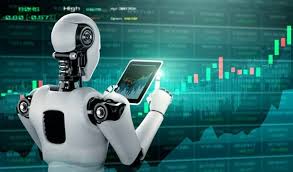In the dynamic world of foreign exchange (forex) trading, technology has long played a pivotal role in shaping strategies and outcomes. Among the many technological advancements, forex robots stand out as a game-changer, revolutionizing the forex robot of trading. These automated systems, powered by algorithms and artificial intelligence, have surged in popularity, promising efficiency, accuracy, and profitability to traders worldwide.
Understanding Forex Robots
Forex robots, also known as expert advisors (EAs), are software programs designed to execute trades on behalf of traders automatically. They operate based on predefined criteria and algorithms, eliminating the need for manual intervention. These criteria typically include technical indicators, price action patterns, and risk management parameters.
The fundamental concept behind forex robots is to remove human emotions and biases from trading decisions, which are often cited as significant hurdles to consistent profitability. By relying on objective rules and logic, these robots aim to capitalize on market opportunities swiftly and efficiently.
How Forex Robots Work
Forex robots operate by analyzing vast amounts of market data in real-time. They utilize complex algorithms to identify trading signals and execute trades accordingly. These algorithms can range from simple moving average crossovers to sophisticated machine learning models that adapt to changing market conditions.
Upon identifying a trading opportunity, the forex robot will automatically place buy or sell orders in the market. Additionally, many robots incorporate risk management features to control position sizes, set stop-loss and take-profit levels, and adjust trading parameters based on market volatility and account equity.
Advantages of Forex Robots
The adoption of forex robots offers several advantages to traders:
- Emotion-Free Trading: One of the primary benefits of forex robots is their ability to execute trades without being influenced by emotions such as fear or greed. This helps maintain discipline and consistency in trading strategies.
- 24/7 Market Monitoring: Forex robots can monitor the markets round-the-clock, allowing traders to capitalize on opportunities in different time zones and currency pairs without the need to be constantly glued to their screens.
- Backtesting and Optimization: Before deploying a forex robot in live trading, traders can backtest their strategies using historical data to assess performance and optimize parameters. This process allows for refinement and improvement of trading strategies over time.
- Speed and Efficiency: Forex robots can execute trades instantly, enabling traders to capitalize on fleeting market opportunities and reduce latency in order execution.
- Diversification: Traders can use multiple forex robots simultaneously to diversify their trading strategies across various currency pairs and timeframes, thereby spreading risk and enhancing potential returns.
Challenges and Considerations
While forex robots offer significant benefits, there are also challenges and considerations to be aware of:
- Market Conditions: Forex robots are designed based on historical data and assumptions about market behavior. However, market conditions can change rapidly, and strategies that perform well in one environment may falter in another.
- Risk Management: While forex robots incorporate risk management features, it’s essential for traders to monitor their performance and ensure that position sizes and risk parameters are appropriate for their account size and risk tolerance.
- Over-Optimization: Excessive backtesting and optimization can lead to overfitting, where the robot’s performance on historical data does not generalize well to future market conditions. Traders should strike a balance between optimizing performance and ensuring robustness.
- Technical Issues: Like any software, forex robots are susceptible to technical glitches and connectivity issues, which can potentially disrupt trading operations. Traders should have contingency plans in place to address such situations.
The Future of Forex Trading
As technology continues to advance, the role of forex robots in trading is expected to expand further. Machine learning and artificial intelligence algorithms are becoming increasingly sophisticated, enabling robots to adapt to evolving market dynamics more effectively.
Moreover, the integration of blockchain technology and decentralized finance (DeFi) into forex trading platforms could revolutionize the way forex robots operate, providing enhanced security, transparency, and accessibility to traders worldwide.
In conclusion, forex robots represent a significant evolution in the world of forex trading, offering traders automation, efficiency, and potential profitability. While they come with their own set of challenges and considerations, when used judiciously and in conjunction with sound trading principles, forex robots can be valuable tools for navigating the complexities of the forex market. As technology continues to advance, the future of forex trading looks increasingly automated and algorithm-driven, ushering in a new era of innovation and opportunity for traders around the globe.










More Stories
Title: Navigating the World of Medicines: Understanding Their Importance and Impact
Navigating the World of Medicines: Understanding, Access, and Innovation
Discovering Mykonos: Exploring Boat Hire and Yachts for Rent